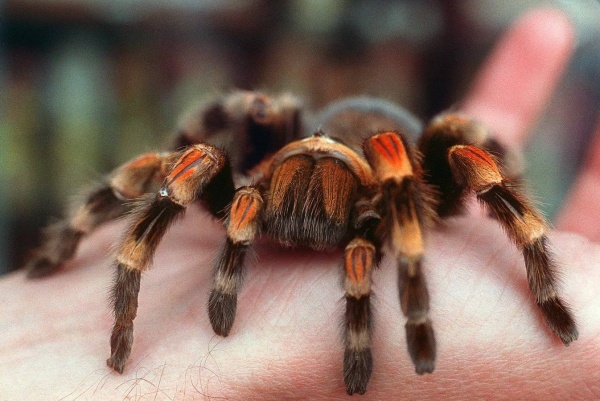Scientists have finally discovered a 15-million-year-old spider fossil in Australia, which is considered the second largest spider fossil ever found.
This enormous spider, known as Megamonodontium McCloskey, is an amazing discovery. It is characterized by an amazing size of 2 inches, and dates back to the Miocene era, about 11 to 16 million years ago, which makes it a competitor to wolf spiders that live today, according to a published study. In the Zoological Journal of the Linnean Society in Britain.
The secret behind naming the spider “McCluskey” is in honor of Dr. Simon McCloskey, the dedicated scientist who discovered this exceptional specimen for the first time in June 2020.
Queensland Museum arachnologist and lead author of the study, Dr Robert Raven, said of the new discovery: “Not only is it the largest fossilized spider ever found in Australia, it is also the first fossil of the Barychelidae family to be found worldwide.”
Raven pointed out, “This amazing fossil belongs to the brush-footed trapdoor spider family, and it is possible that it was resorting to a cunning strategy to hunt its prey, which is relying on its camouflaged burrow in order to trap prey that feels reassured. The unique lifestyle of these spiders may explain their rarity.” Its fossils are in the scientific record.
The study included the results of a detailed examination of the spider fossil, using a scanning electron microscope, which revealed amazing insight into the spider’s claws, whiskers (hair-like structures), and sensory adaptations.
The survey results indicate that the hairs of this huge spider had many functions, including sensing chemicals, detecting vibrations, defending against predators, and even making sounds.
The recent discovery of the Megamonodontium McCloskey spider fossil highlights a unique period during the Miocene Epoch, when climate change transformed the Australian landscape, providing an opportunity for a range of mega-arachnids to diversify.
Amidst a wonderful chapter in Earth’s history during the Miocene Epoch, which was characterized by dramatic climate shifts and dry landscapes, arachnid wealth was revealed in Australia. This era provided muscular spiders with a golden opportunity to diversify, a phenomenon that has long interested scientists. Despite this, The scarcity of spider fossils from this period leaves many questions unanswered.

